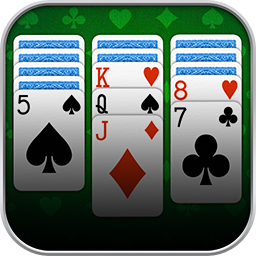Spiderphobic? Don‘t fear – this particular spider is charming once you figure out how it works. After all, the basic rules of any solitaire game are simple enough. But mastering them requires skill, practice, and foresighted play!
As in most Solitaire variations, the Spider playing field consists of the tableau, where the main show is running, the stock, and the foundation. The stock is a type of draw pile. In Spider Solitaire, you receive one open card per tableau pile for each time you draw. You cannot influence where which card is going. The foundation catches your fully collected card stacks. You can find the exact setup and process of the game in our Spider manual.

Spider uses twice as many cards as Klondike Solitaire – 104 in number. And in there, we have eight to-be-sorted sequences. That is why there are also eight foundation piles – one for each sequence. What is more, Spider will often use one suit only. Spider’s ruleset makes it quite challenging to play with multiple suits, after all. There will be more lessons on that topic in the future.
General Framework
In Spider Solitaire, the plays the leading part. You see a row of face-down card stacks, topped with one open card each. Now, you have to try to add the open card elsewhere and reveal the face-down card underneath as a result.
In the standard, one-suited Spider Solitaire, there is no need to mind matching suits when you combine cards. You simply need to add matching cards to one another and, in doing so, free the face-down cards. A complete and sorted sequence with a King at the bottom and the Ace on the very top automatically moves to the foundation. Thus, you need to watch out not to get stuck in the tableau or block yourself there.
Stay Focussed
What seems so easy might turn into a pitfall in a careless moment. You should meticulously track where you are adding which card. With eight sequences, more than one card will match now and again. That way, you avoid unwarily blocking great options.
Careful With the Stock
After combining all matching cards in the tableau with no more moves possible, you can draw from the stock. Now, one random stock card is added to each tableau pile. Thereby, you are opening new opportunities for further combinations.
But watch out: The more cards there are in the tableau, the harder it is to sort them. Thus, the risk of hindering yourself increases more and more. In the worst case, you have to give up the game with an empty stock pile, empty foundation, yet filled tableau.
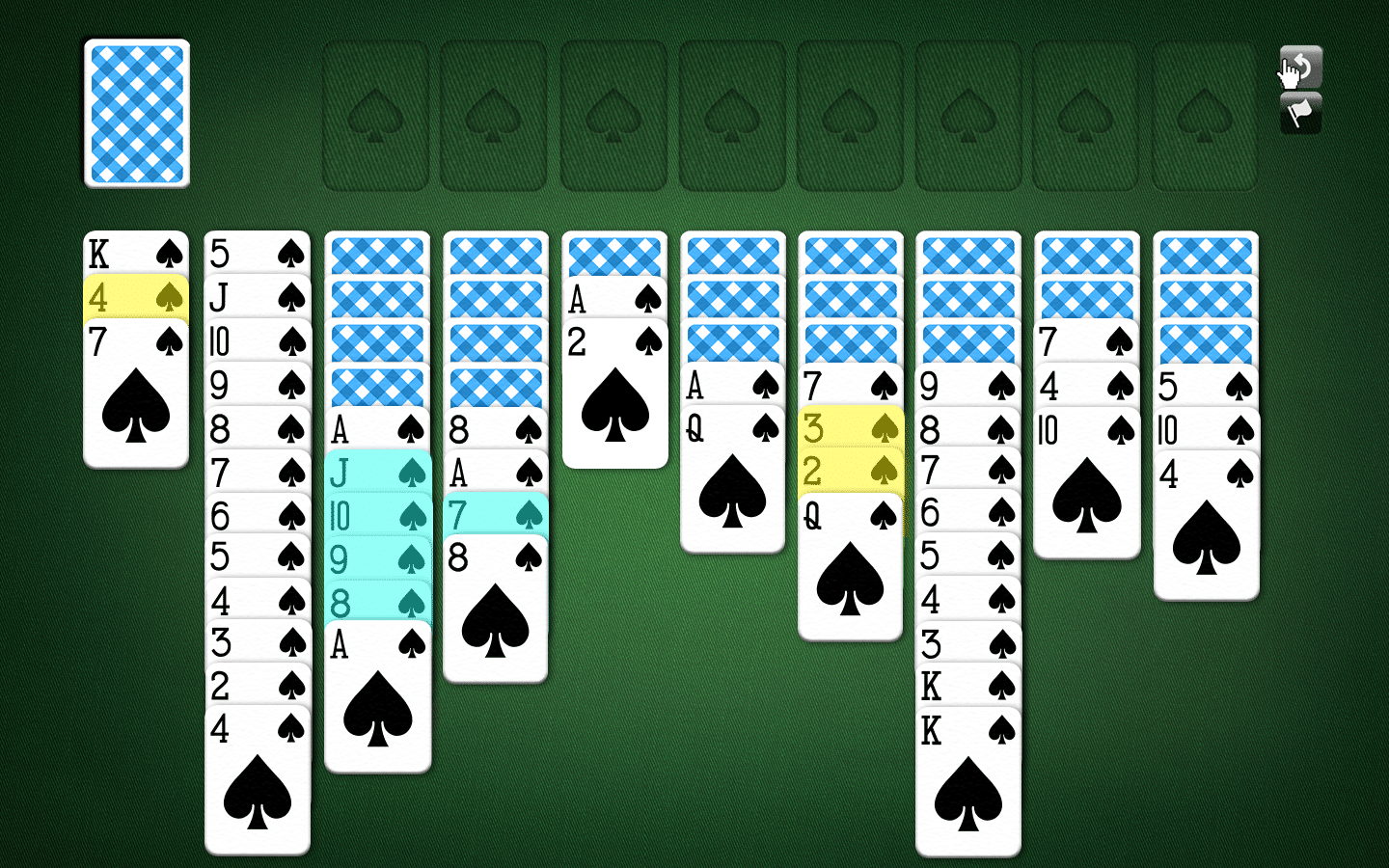
If you notice missed opportunities right after drawing, you can undo a move here at the Spider Place. You can do that as often as you like. Although, each undone move costs you one point.
Empty Panels in the Tableau
When playing Spider, empty panels in the tableau can be useful as well as obstructive. They only become a problem when you desperately need to draw from the stock. After all, you are only allowed to take new cards when all piles in the tableau are occupied by at least one card.
Luckily, there is an easy fix in Spider: You can place any card on an empty tableau panel. Such an empty panel is useful when it comes to combining and freeing cards. Thus, it is advisable to empty a tableau pile quickly when possible.
How You Get One
In this example, you can achieve an empty panel by moving a row of cards. You really need that because only a few of the other revealed cards could be combined and thus moved with reason.
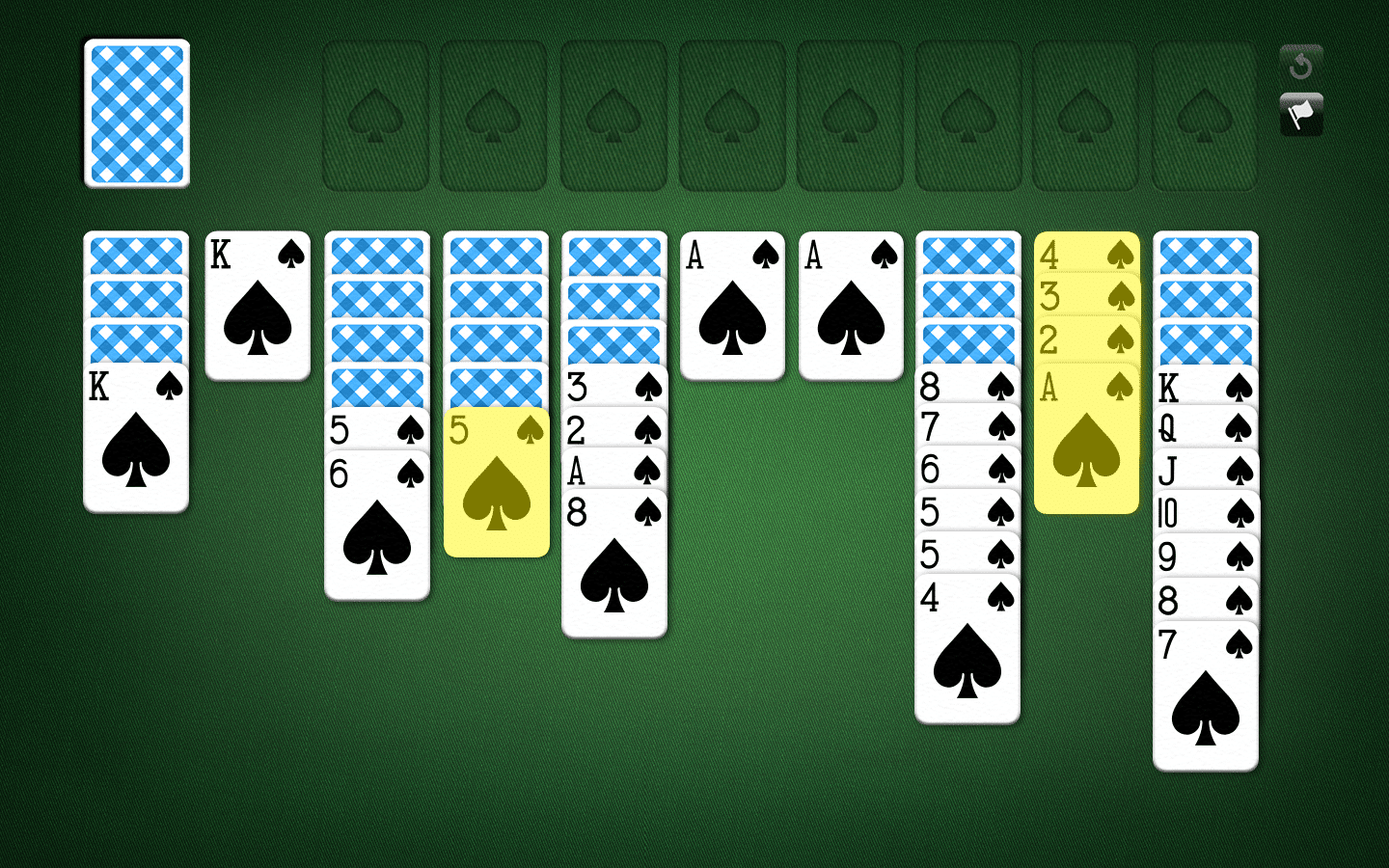
And What You Need It For
As a result, you have more wiggle room: You can dump cards here that you could otherwise not add to others and that block face-down cards or other opportunities to combine cards.
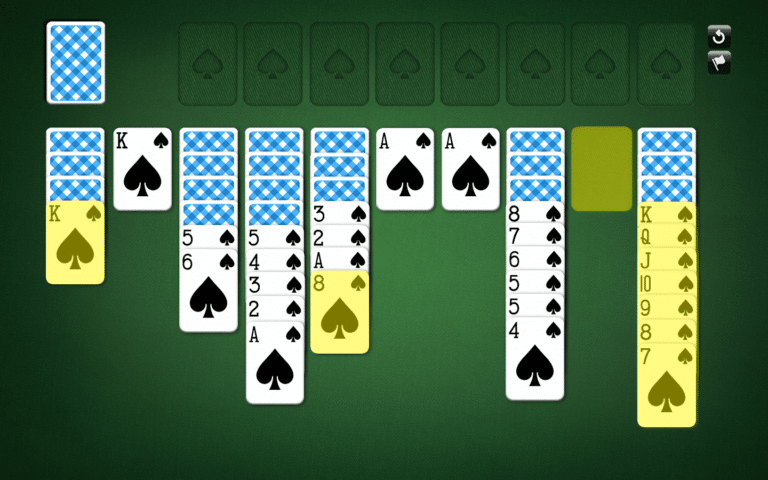
Sometimes, drawing from the stock will leave you with a few unsuitable cards mid-game. The chance to get them in line will come with time and a detour via an empty tableau panel.
First, you cut the cards where they stop forming a proper row and move the excess to an empty panel. That way, you have an increased number of options for combining more cards. The unsuitable cards are either out of the way or, as in the following example, part of the solution.

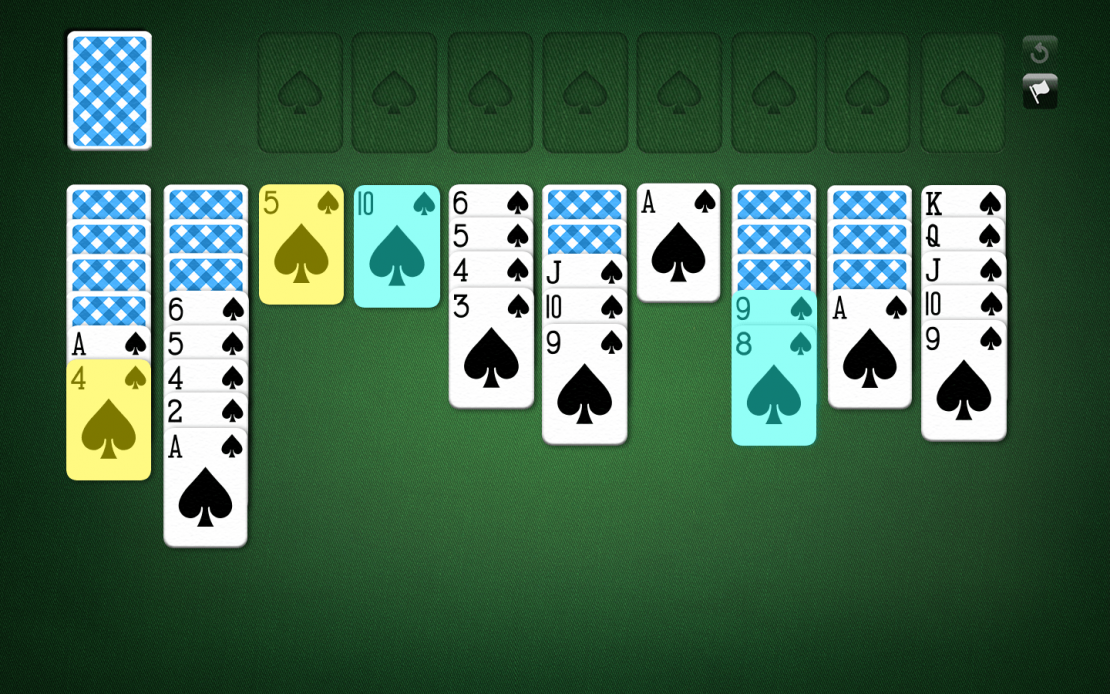
This way, we have unlocked two new opportunities to combine cards.
Let us sum that up: Keep a certain level of mobility in the tableau. You can achieve that by not drawing from the stock prematurely and by creating an empty panel early on. Those help a lot with sorting, after all!
For more Spider knowledge, you can visit our Spider School at any time.




